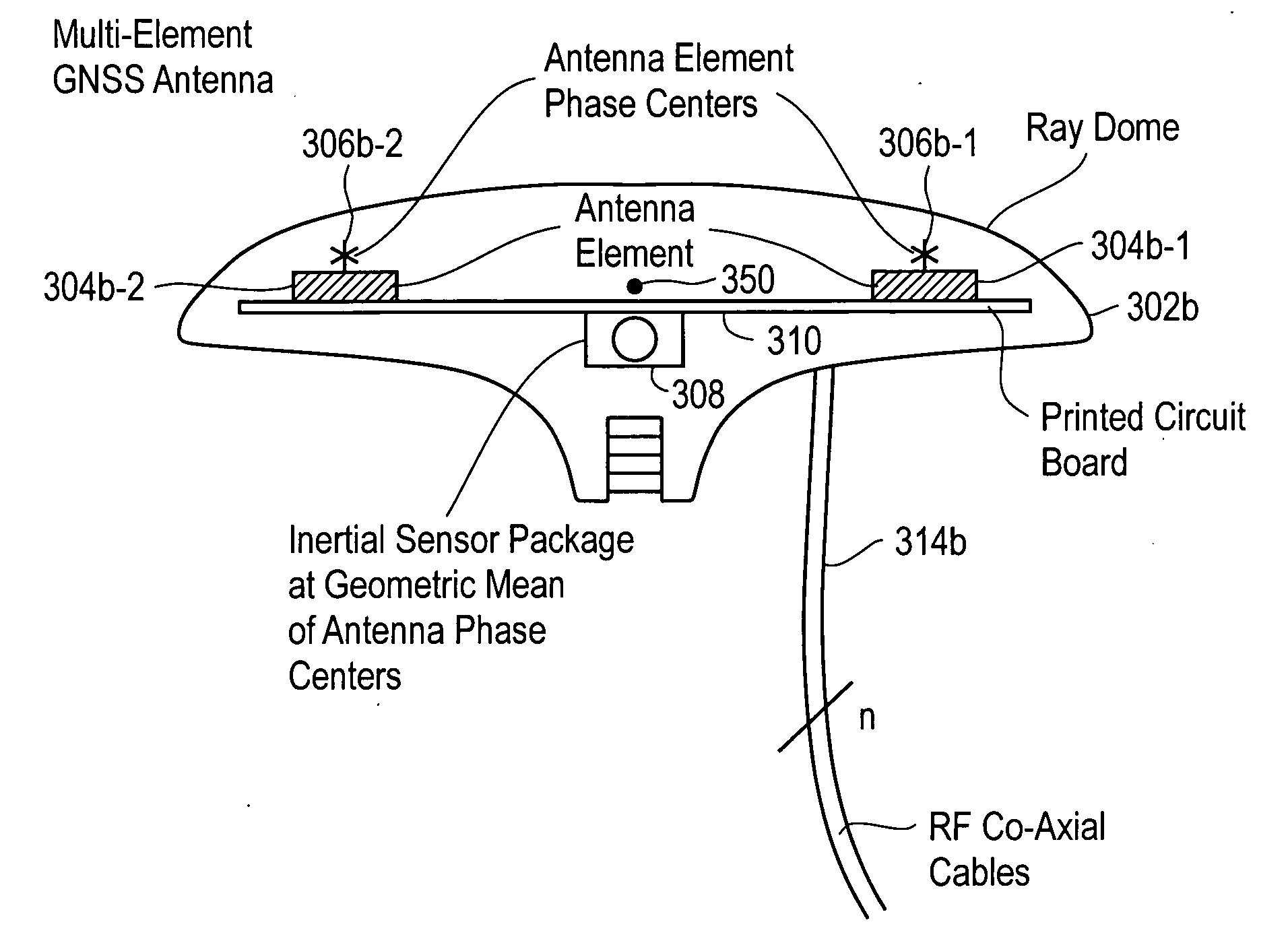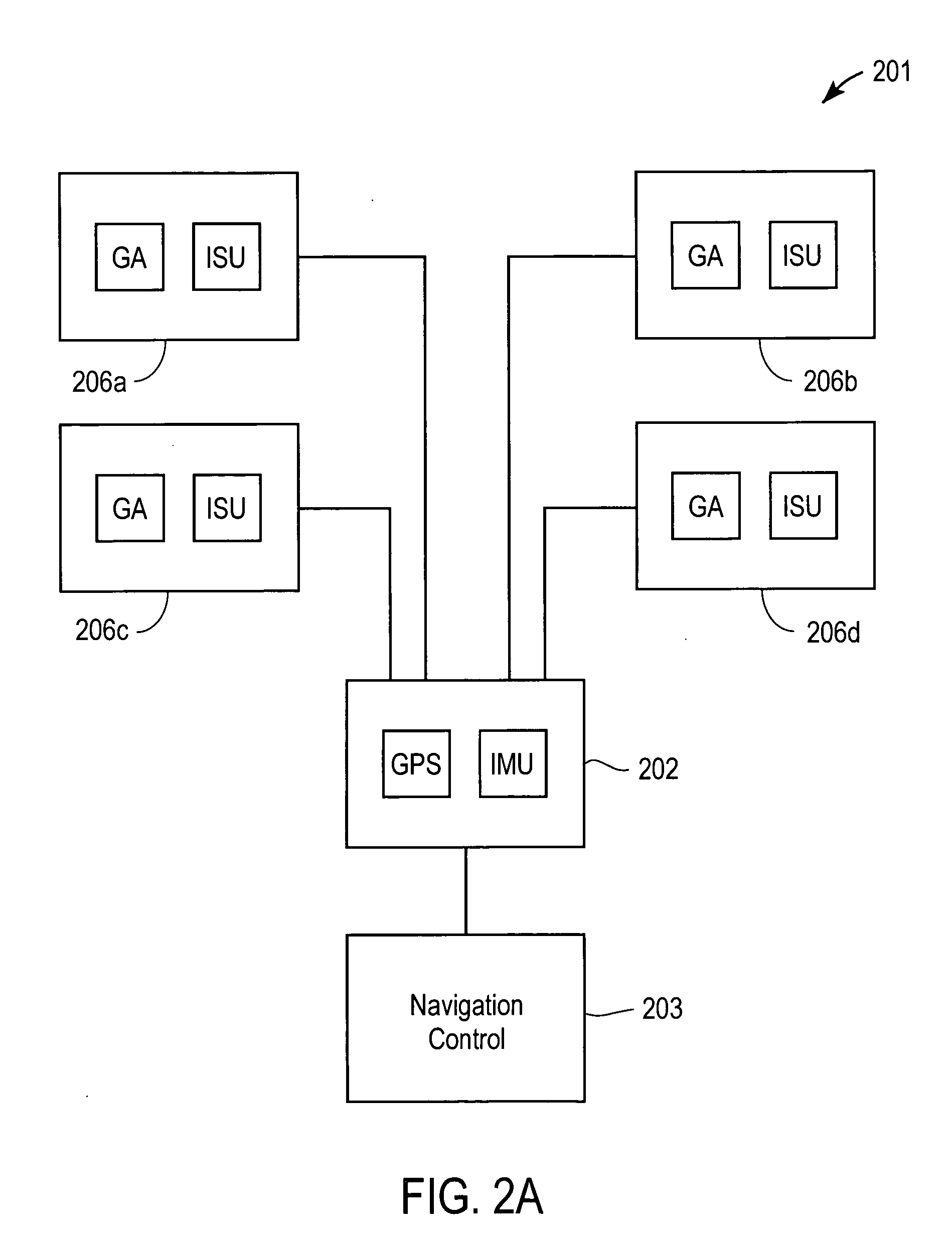Method and apparatus for improved position, velocity, orientation or angular rate sensor
a technology of angular rate and position, applied in the field of navigation systems, can solve problems such as preventing calibration
- Summary
- Abstract
- Description
- Claims
- Application Information
AI Technical Summary
Benefits of technology
Problems solved by technology
Method used
Image
Examples
Embodiment Construction
[0027] Turning now to FIG. 2A a block diagram of an exemplary navigation-positioning system 201 in accordance with an embodiment of the present invention is shown. In particular, the system provides global navigation satellite system (GNSS) based and inertial-based determination of vehicle position, velocity, orientation (attitude) and angular rate. Inertial sensors are co-located with GNSS antennas to more accurately derive the desired position and rate information.
[0028] It is noted that, while in exemplary embodiments, the GNSS receives positioning signals from the Global Positioning System (GPS), the system may be used with other radio based positioning or navigation systems, such as the GLONASS system, Galileo, or other systems such as pseudolites, low earth orbiting satellites (LEO), geosynchronous satellites, etc.
[0029] In the embodiment illustrated, the navigation-positioning system 201 includes a plurality of antenna units embodied as integrated GNSS Antenna-Inertial Sens...
PUM
 Login to View More
Login to View More Abstract
Description
Claims
Application Information
 Login to View More
Login to View More - R&D
- Intellectual Property
- Life Sciences
- Materials
- Tech Scout
- Unparalleled Data Quality
- Higher Quality Content
- 60% Fewer Hallucinations
Browse by: Latest US Patents, China's latest patents, Technical Efficacy Thesaurus, Application Domain, Technology Topic, Popular Technical Reports.
© 2025 PatSnap. All rights reserved.Legal|Privacy policy|Modern Slavery Act Transparency Statement|Sitemap|About US| Contact US: help@patsnap.com



